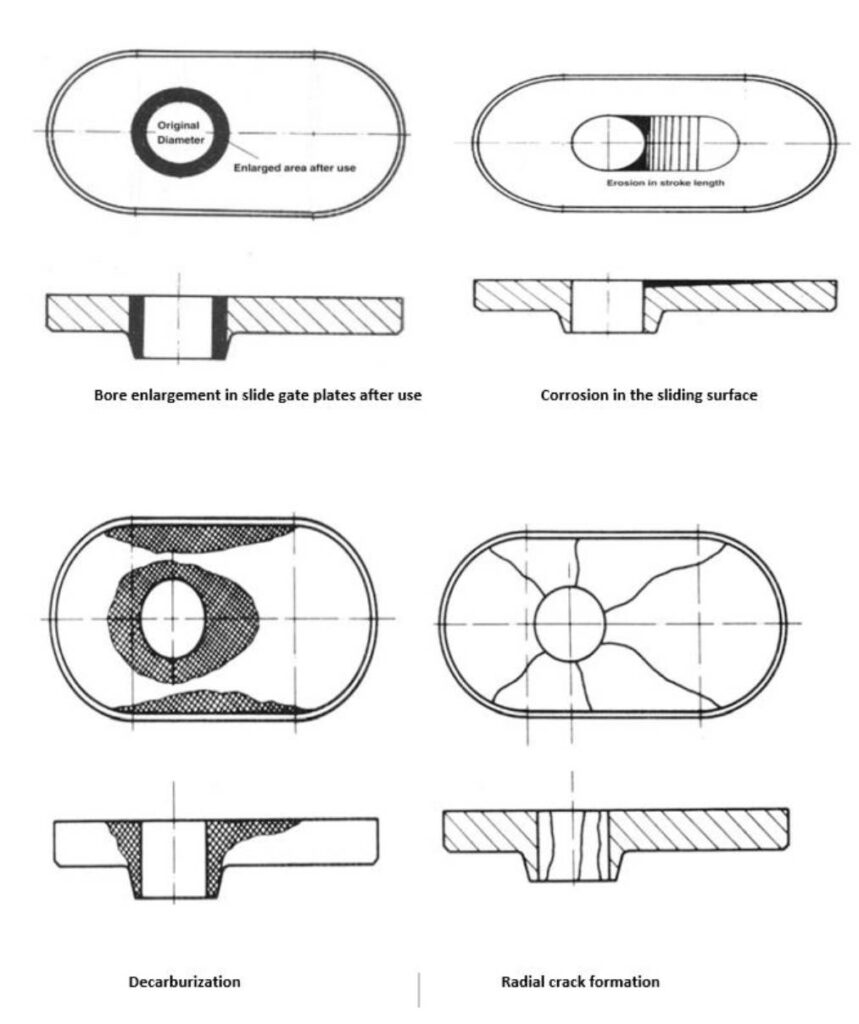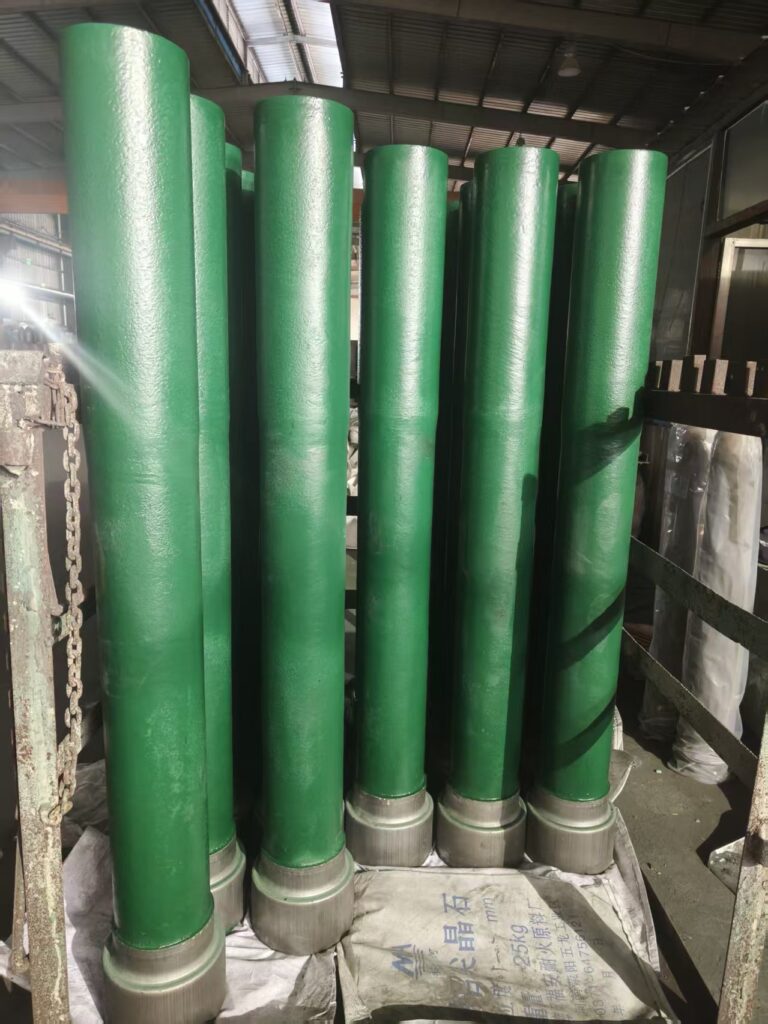During tapping of liquid steel through slide gate, the steel is passing through the slide plates and hence is subjected to the attack of slag and liquid infiltration in contact surface.
Since it is in contact with molten steel at high temperature, high hot strength is required. In closed condition, the ferro-static load is also a concern in lower plate. The refractory requirements for slide gate plates are:
– Resistance to corrosion and erosion towards metal and slag.
– Thermal shock resistance.
– Lower expansion of plate refractory at operating temperature.
– High thermal conductivity.
– Good Crushing strength.
– Resistance to severe abrasion.
1.Alumina Plates:
The Al2O3-C slide plates has been widely used because of its good thermal conductivity, superior thermal shock resistance and wear resistance. graphite and addition of Si and Al to improve oxidation resistance and high temperature strength.Addition of carbon in refractory composition of slide plates improves corrosion resistance because of its non-wetting character. It increases thermal conductivity and hence improves thermal shock resistance. Al2O3-C refractory with metallic addition (Si and Al metal ) has superior flexural strength and compressive strength at elevated temperature, which improves erosion and abrasion resistance in sliding surface. Presence of carbon also reduces frictional force within the plates during opening and closing the slide gates.
2.Al2O3-ZrO2-C:
A major improvement was observed by adding ZrO2 and ZrO2-SiC in Al2O3-C slide plate refractory composition. Addition of ZrO2 reduces the thermal expansion under load and hence improves thermal shock resistance. Higher the amount of ZrO2, lower is the corrosion attack of refractories. Addition of silicon carbide (SiC) and boron carbide improves corrosion resistance of Al2O3-ZrO2-C slide plates.
3.Magnesite Plates:
Magnesia plates were developed first in Europe and were used under severe condition of high oxygen-containing steel or high Ca-added steel. Magnesia shows a good resistance to corrosion, but is inferior in spalling resistance because of its high thermal expansion coefficient. Generally, tar-impregnated, 85–95% MgO refractory are used. The material of the plate refractory must be decided considering the bore diameter and the sliding cycles, from the view point of spalling resistance. Alumina and spinel are added in magnesia refractory to improve spalling resistance.
4.Slide Plate Refractory for Ca-Treated Steel:
The addition of Ca-alloy in steel ladle becomes popular as a method of removing the non-ferrous inclusions in steel and to control contaminations. Regular alumina carbon slide gate plates show high erosion with such grades of steels which results in unsafe operation and low life. The main reason for the failure of Al2O3-C plates is the formation of low-melting compounds by the reaction of Ca or CaO with Al2O3 and SiO2 of plate composition during use.



